Bilbao: Spain’s Underrated City in the North
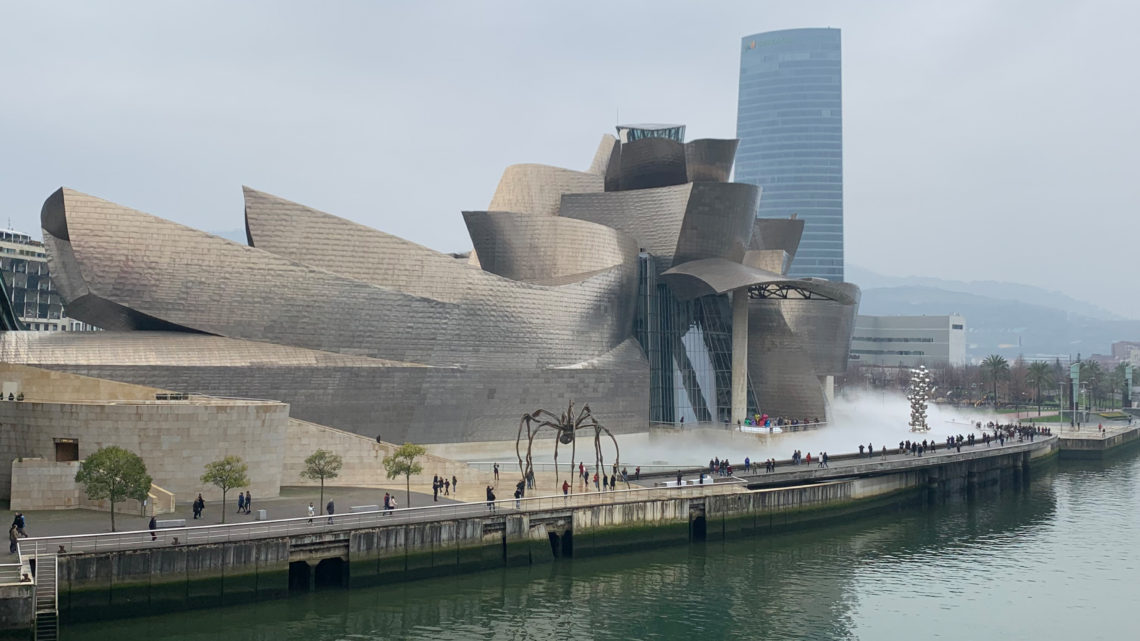
Frank Gehry has been my favorite architect since high school. During
The museum quickly became one of my favorites, if not my favorite building in the world! I had always dreamed of visiting this architectural masterpiece in person. 10 years later, I finally made that dream a reality by including a stop in Bilbao after exploring Barcelona.
From El Prat airport, it was only a short flight until I arrived at my destination. After a quick bus ride from Bilbao airport, I arrived in the city center. My hostel was located in Casco Viejo: Bilbao’s medieval quarter. Although the hostel was fairly empty that night, it was nice to have a quiet night to relax and take it easy.
First Impressions
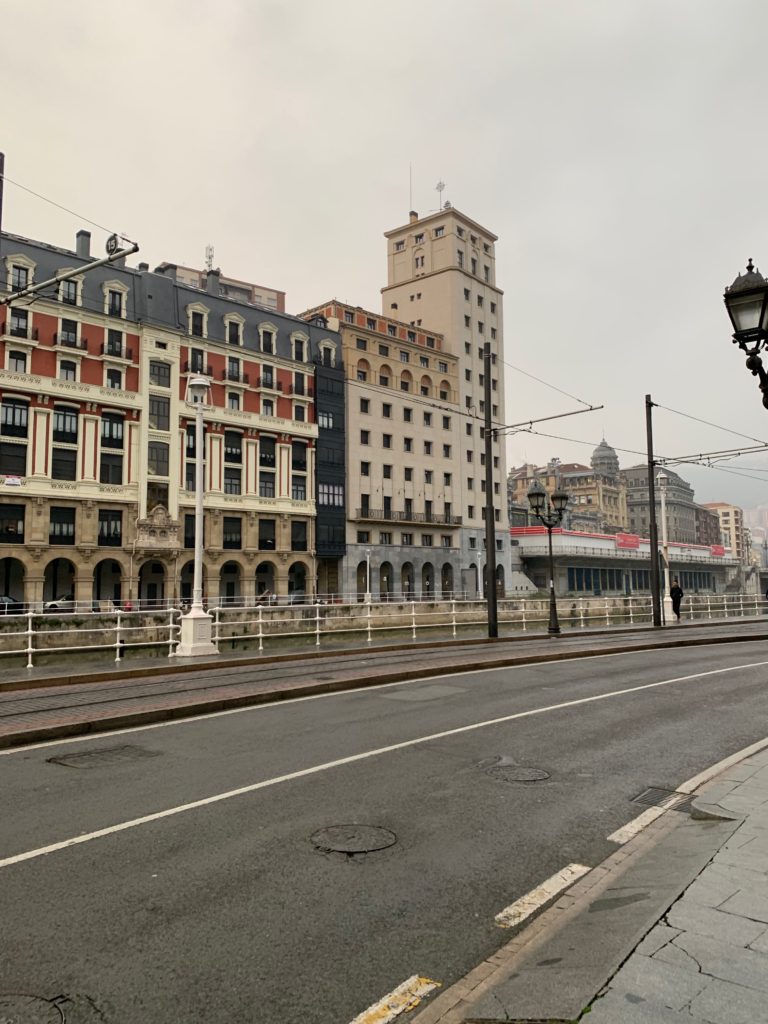
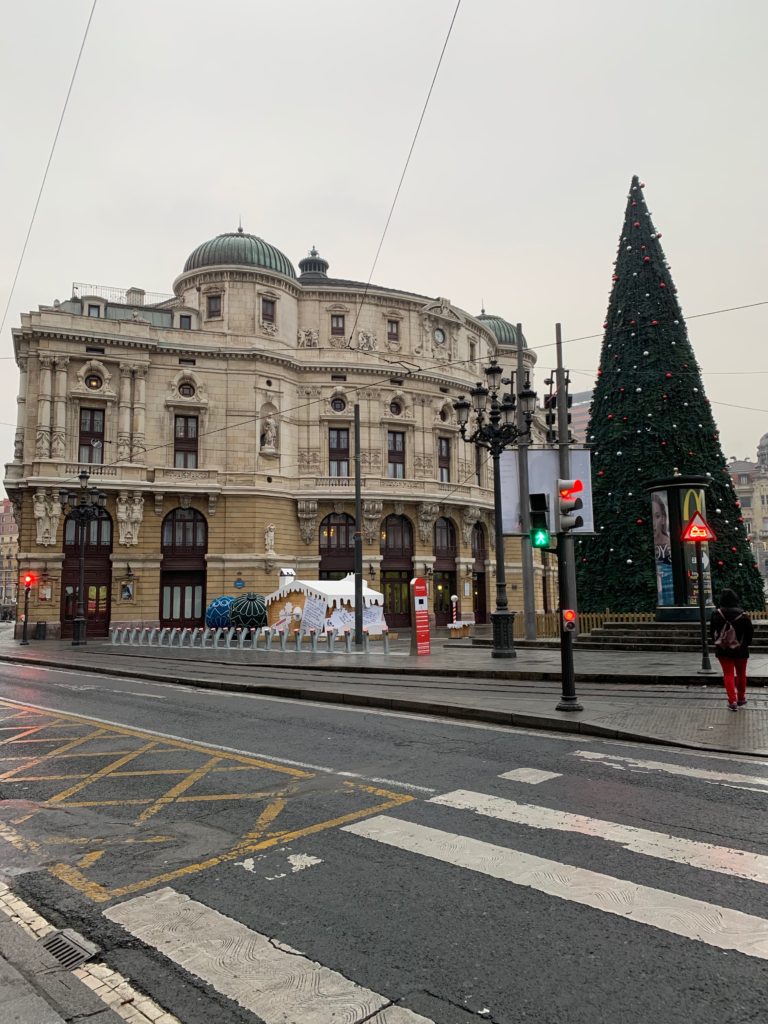
The following morning, I had a full day to explore the largest city of the Basque Country. I set off towards the attraction that brought me here in
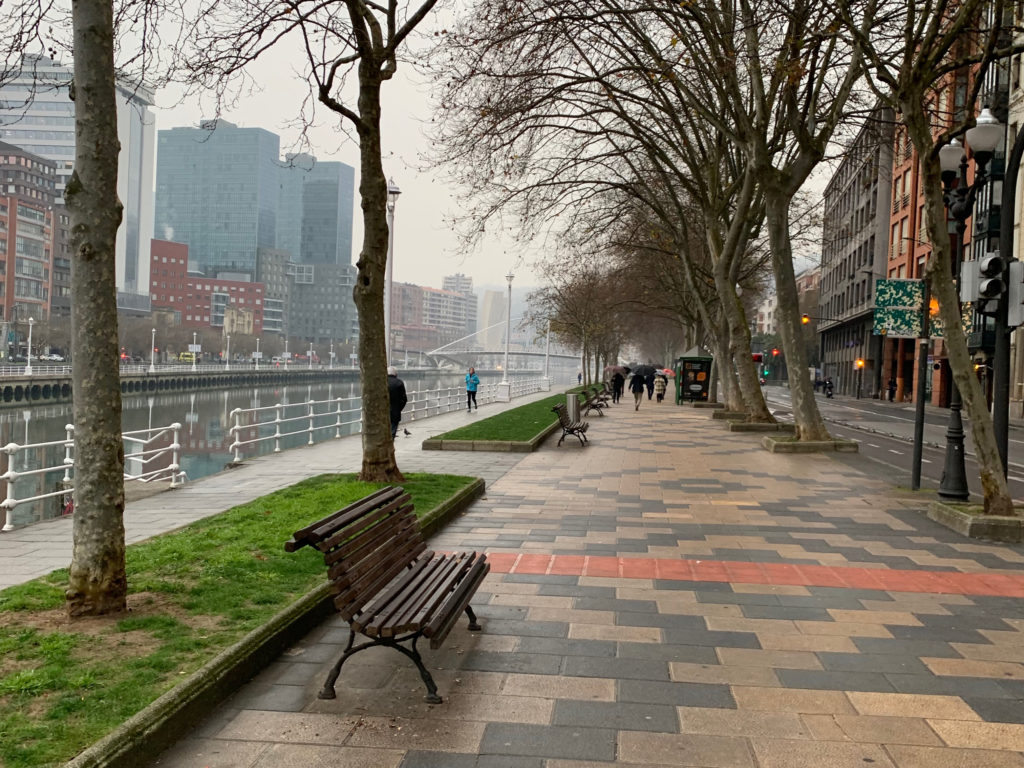
I decided to stay on the north side of Bilbao’s river as I walked towards the museum. Since Bilbao is located near Spain’s northern coast, it did not have the same sunny weather that I experienced in Barcelona. It was drizzling when I visited, and the temperature was at least 10°F cooler than on the Mediterranean coast.
Zubizuri
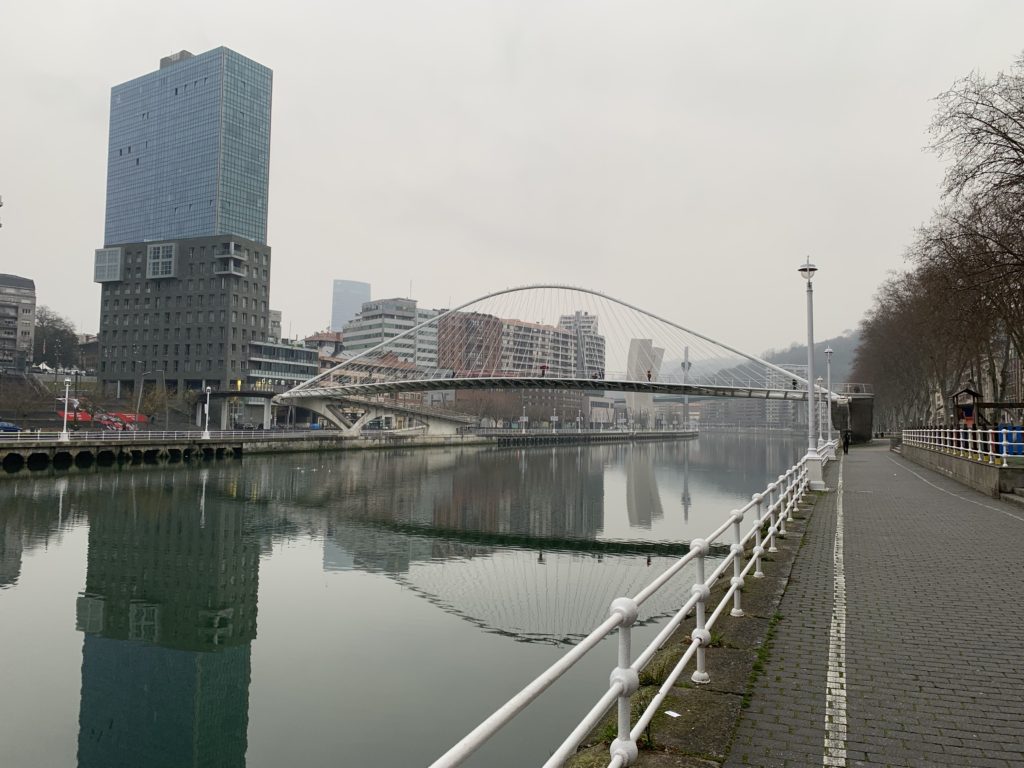
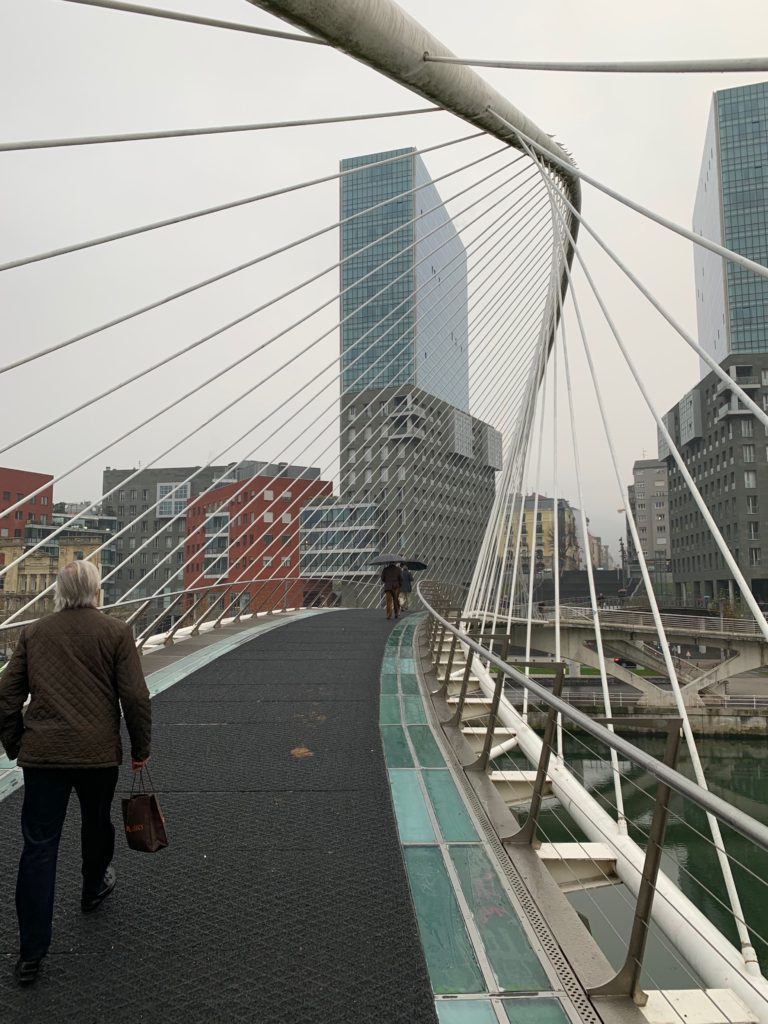
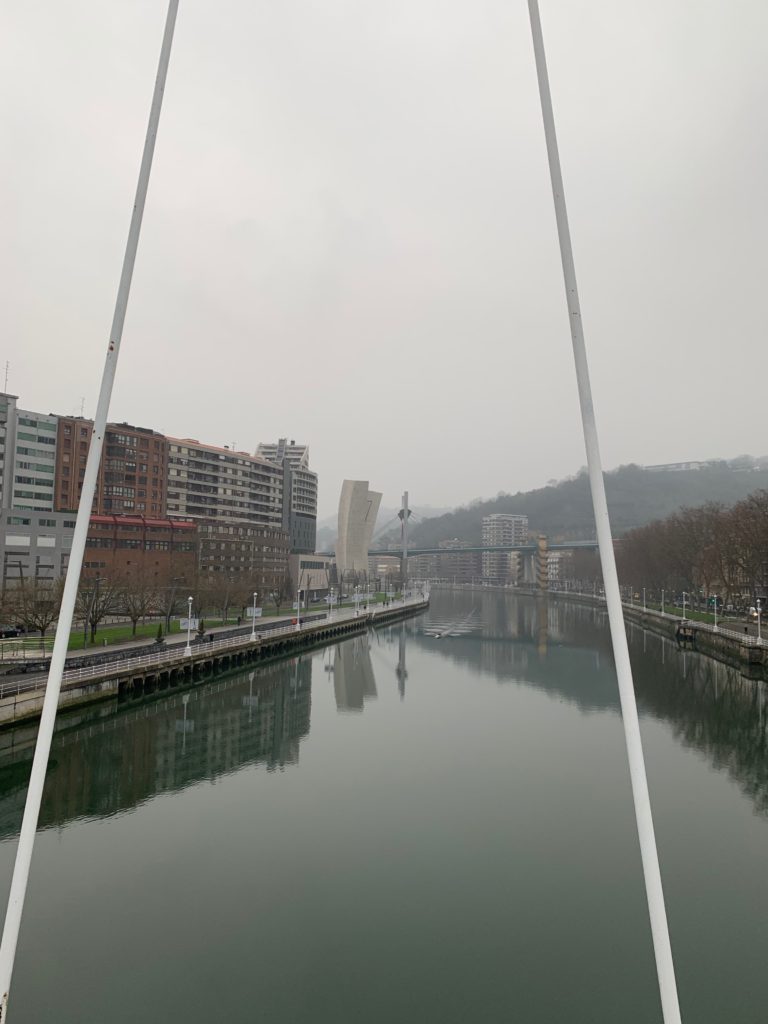
I eventually reached my first architectural landmark of the day: the Zubizuri. This white pedestrian bridge was designed by Santiago Calatrava: another one of my favorite architects. It takes on the form of a swaying arch, from which steel cables support the curved walkway below. Much like Calatrava’s other designs, the bridge stands out as an icon against its surroundings. I walked across this modern bridge to the Abando district of Bilbao.
Guggenheim Museum Bilbao
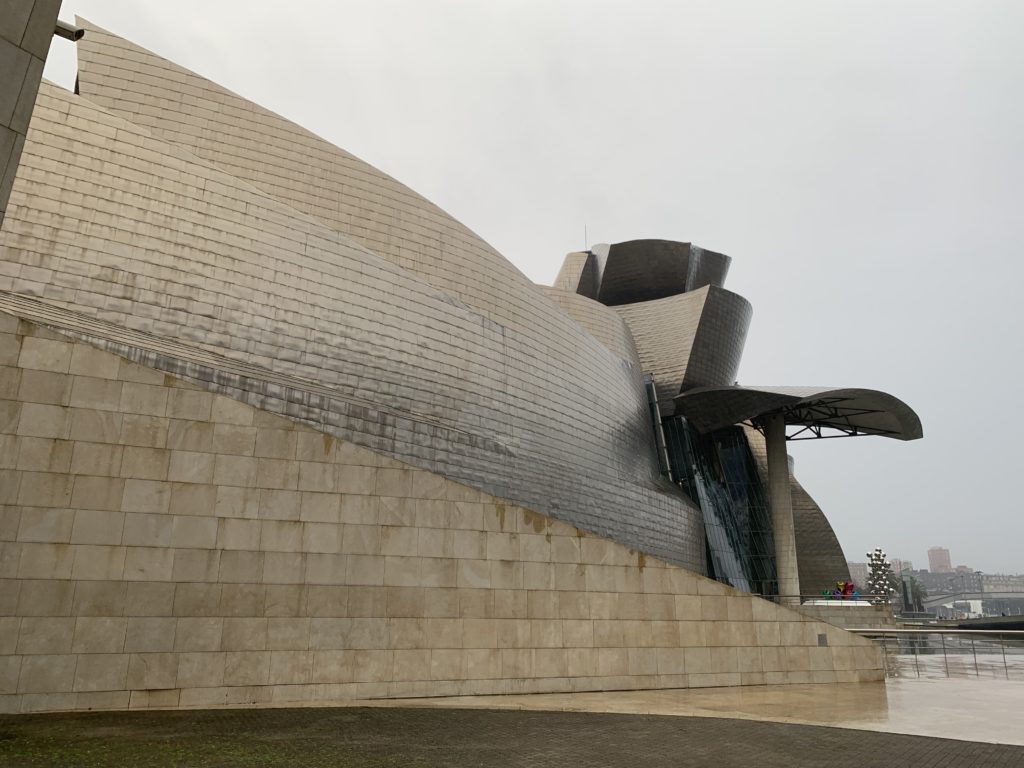
After a short walk, I finally arrived at one of the buildings that spearheaded my interest in architecture! The Guggenheim Bilbao was completed in 1997 by Frank Gehry in an effort to revitalize Bilbao’s economy. At the time, the city was rundown and in an economic decline. With the completion of this iconic museum, Bilbao was put back on the tourist map. As I walked by, I was absolutely amazed by this extravagant building! Even though it was overcast outside, the titanium exterior shined against the cloudy sky. Below the titanium, Gehry uses tan-colored limestone to create a fluidic base.
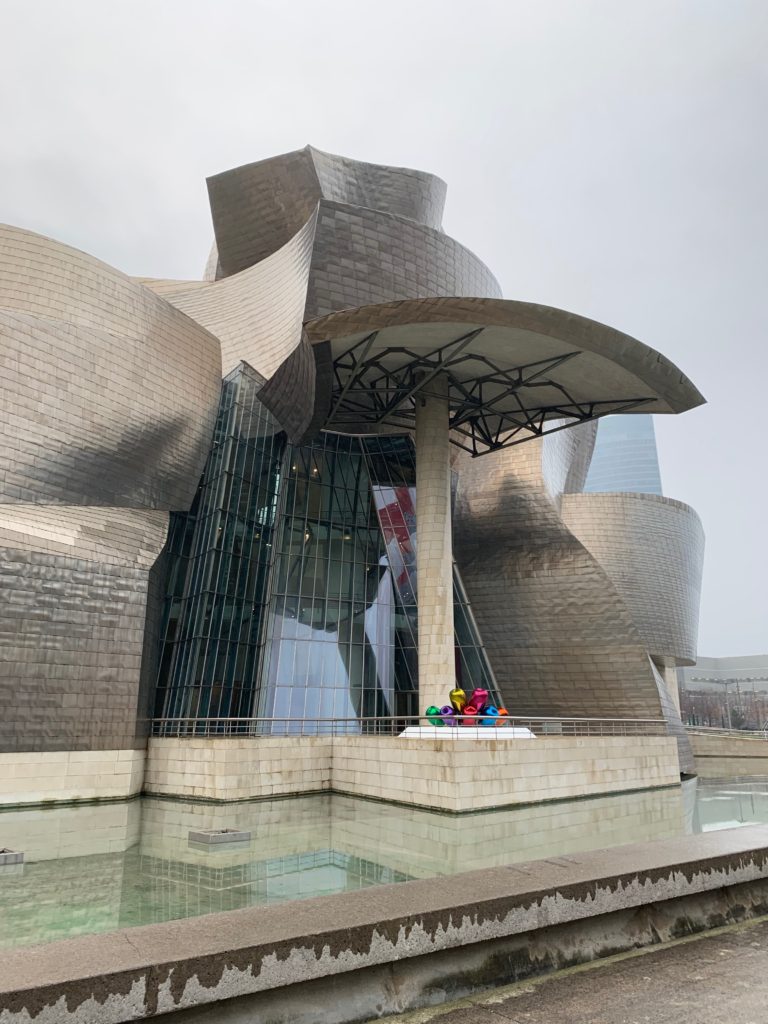
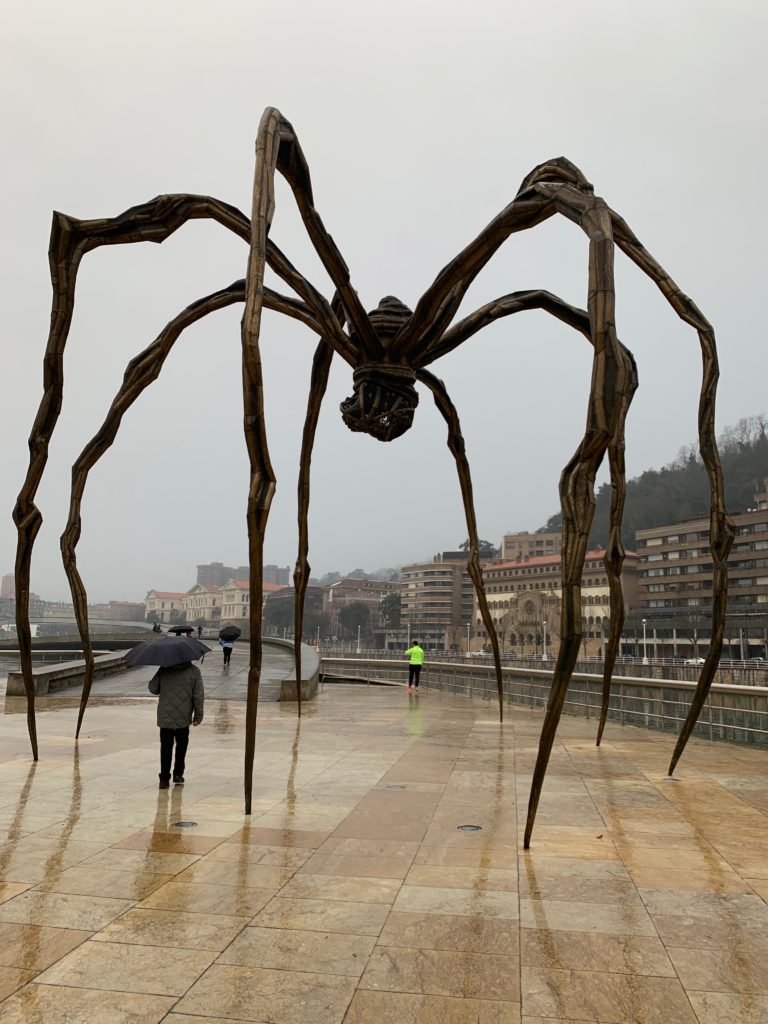
The center of the front façade has a dramatic overhang, which covers an outdoor terrace. Throughout the exterior, glass curtain walls break up the titanium masses, allowing natural light to enter prominent spaces inside the museum. The largest of these glass areas
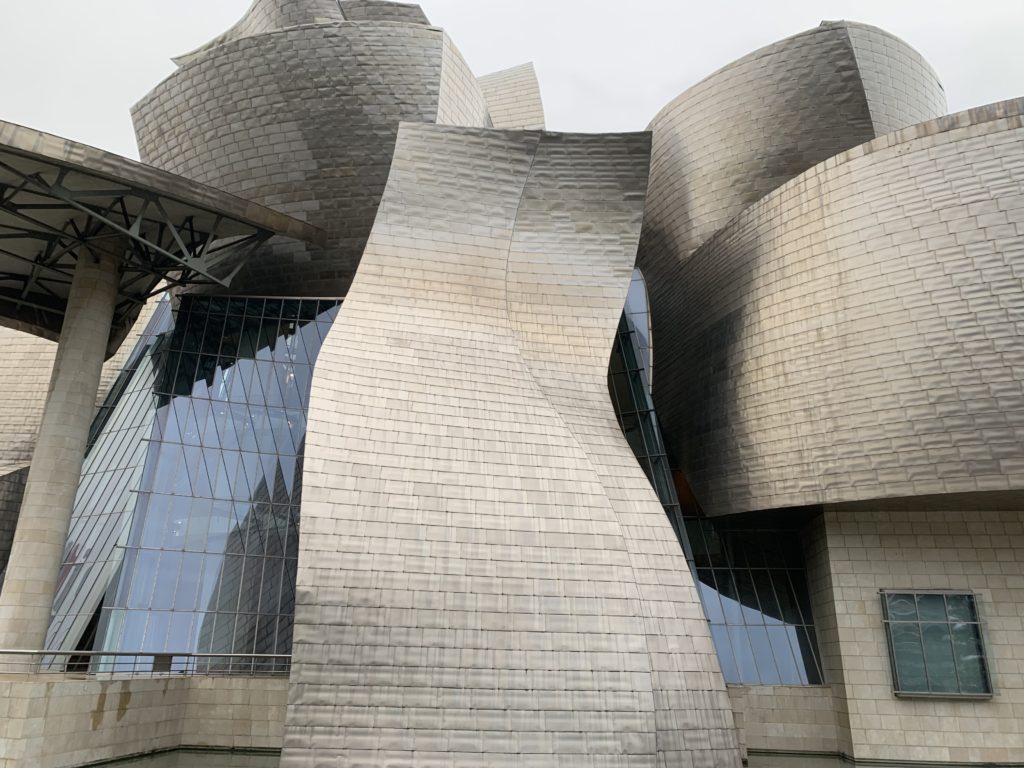
The Guggenheim Bilbao is one of the finest examples of deconstructivism. Much like the Louis Vuitton Foundation in Paris, this Frank Gehry building seamlessly blends architecture and sculpture into a design that is playful and fun to explore. The use of modern materials makes this building stand out from the others around it. The titanium masses appear to dance against the sky, and the individual scales are reminiscent of a fish.
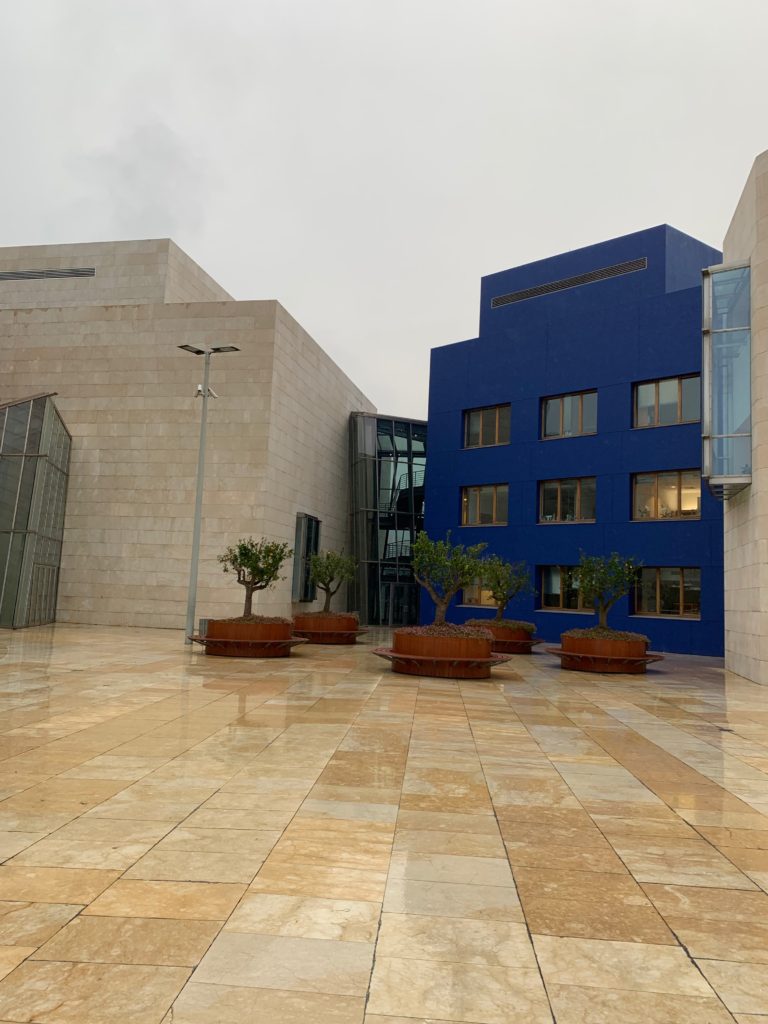
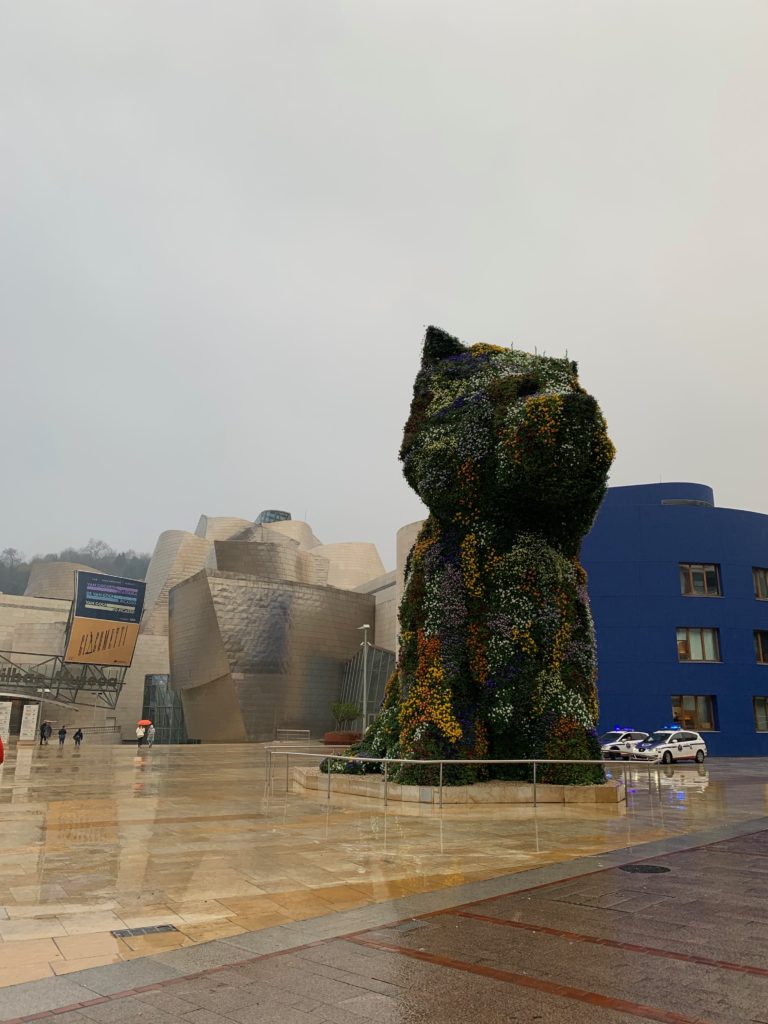
I continued my walk around the building. In contrast to the titanium-clad riverfront façade, which is commonly seen in pictures, the rear of the building has an angular appearance made of limestone and blue colored massing. Similar to the front of the museum, glass curtain walls break up the exterior massing.
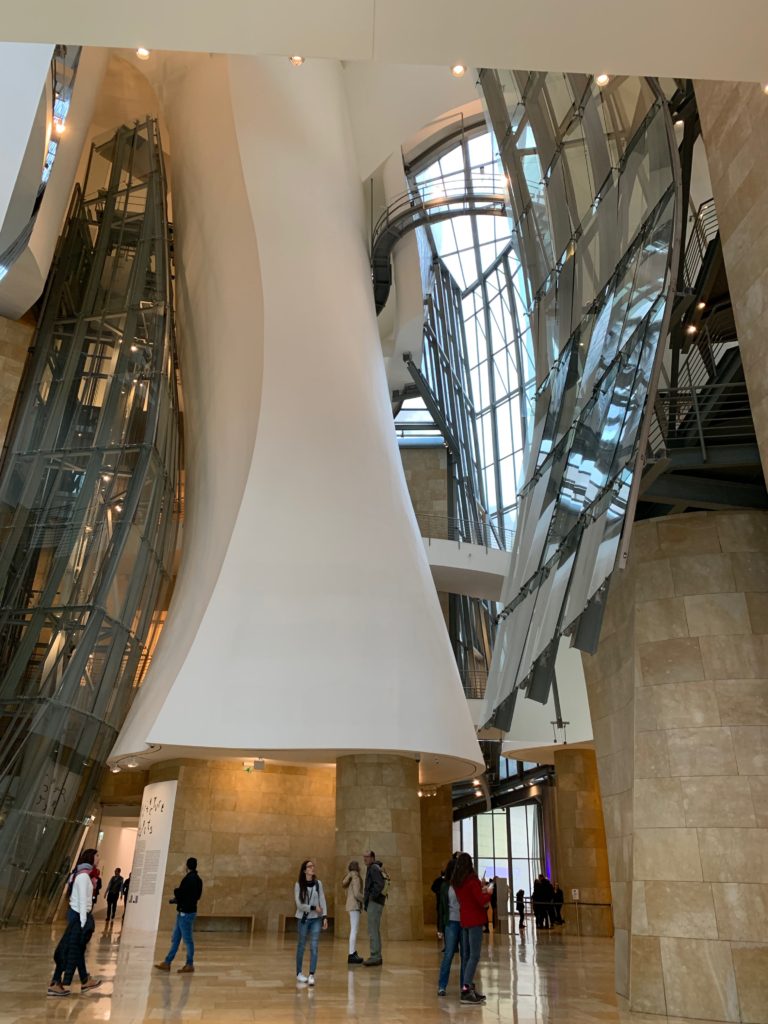
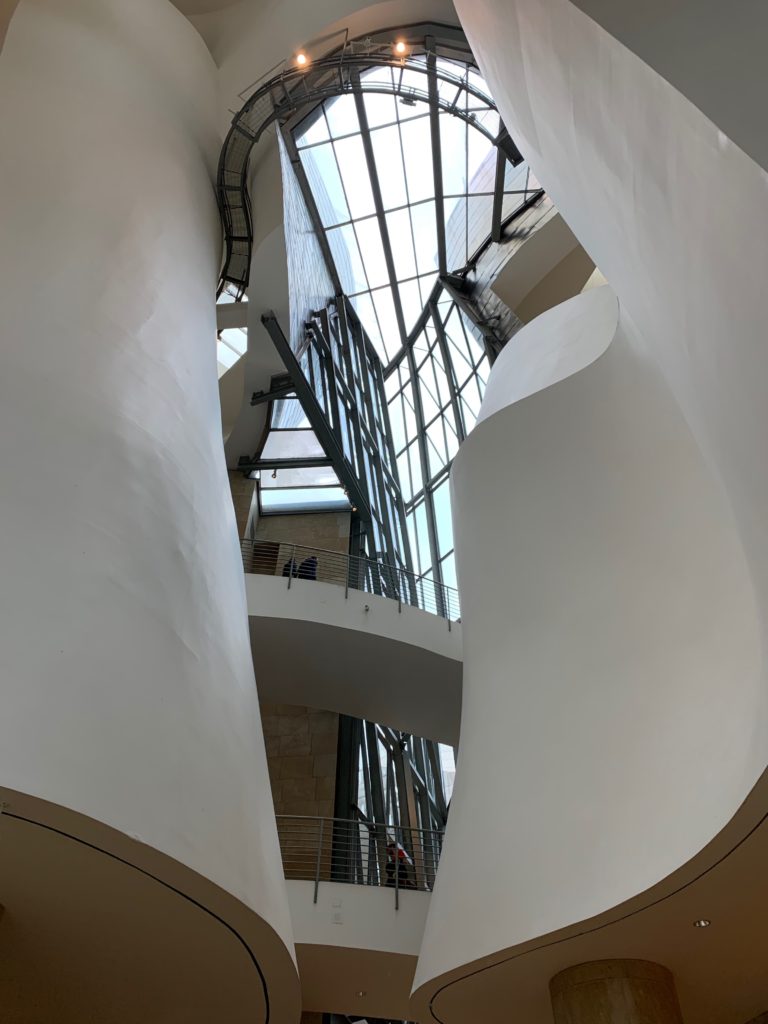
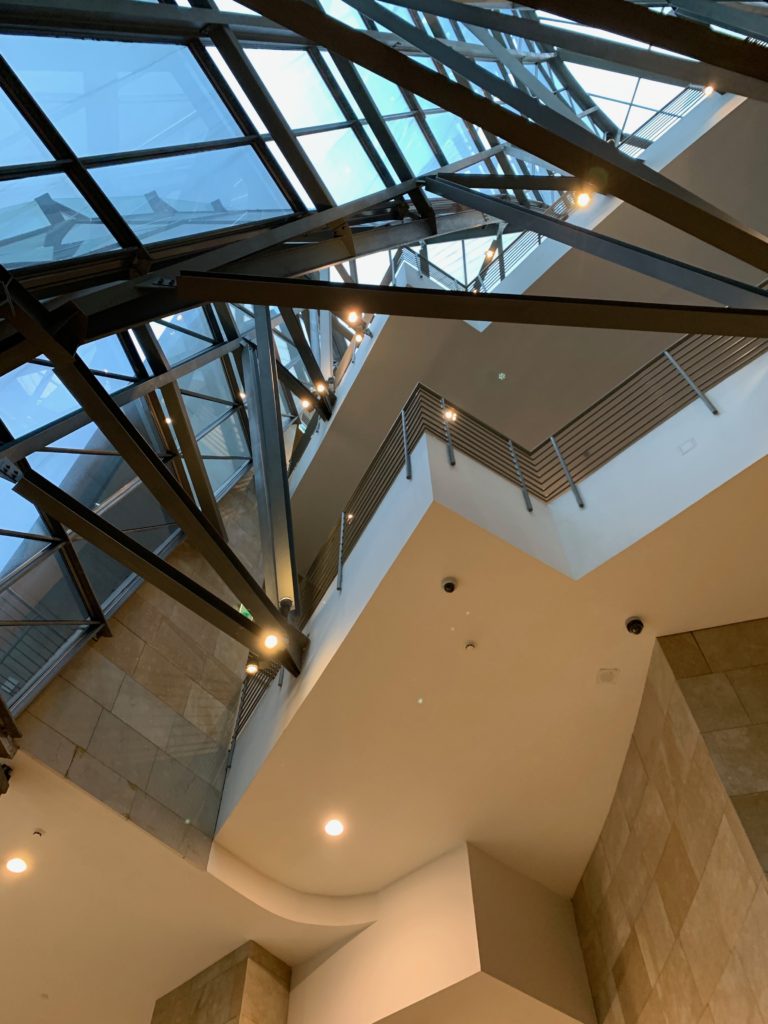
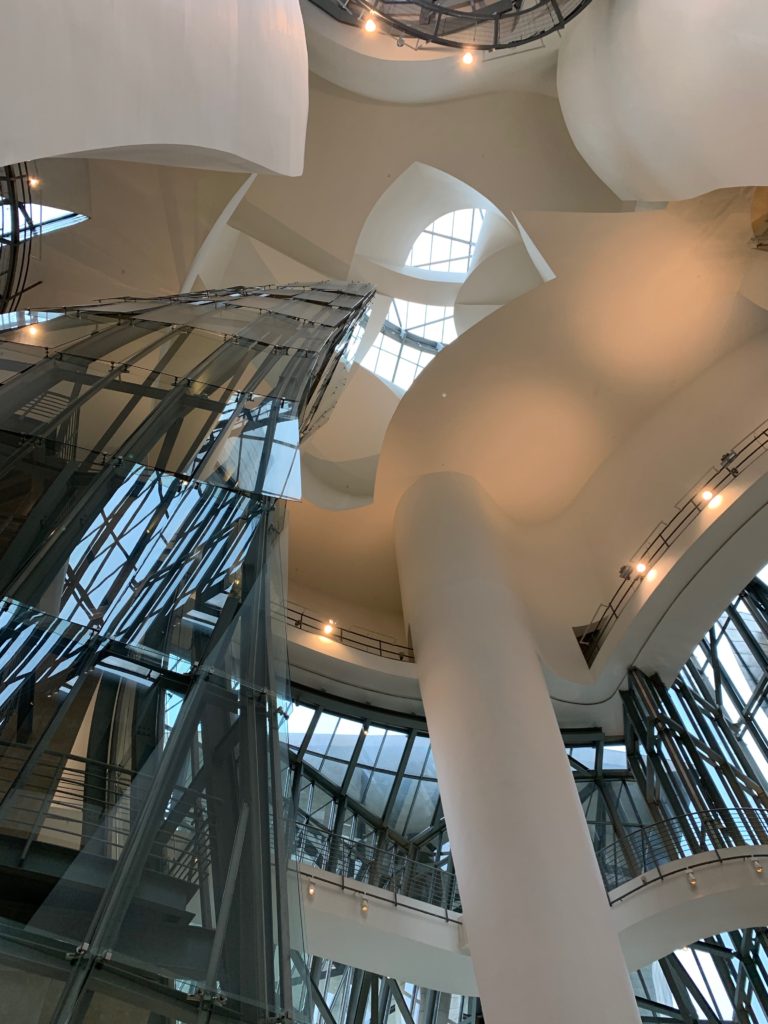
I entered the museum just in time for its opening at 10:00 a.m. As I stepped into the atrium, I was immediately drawn to the convergence of the building’s diffe
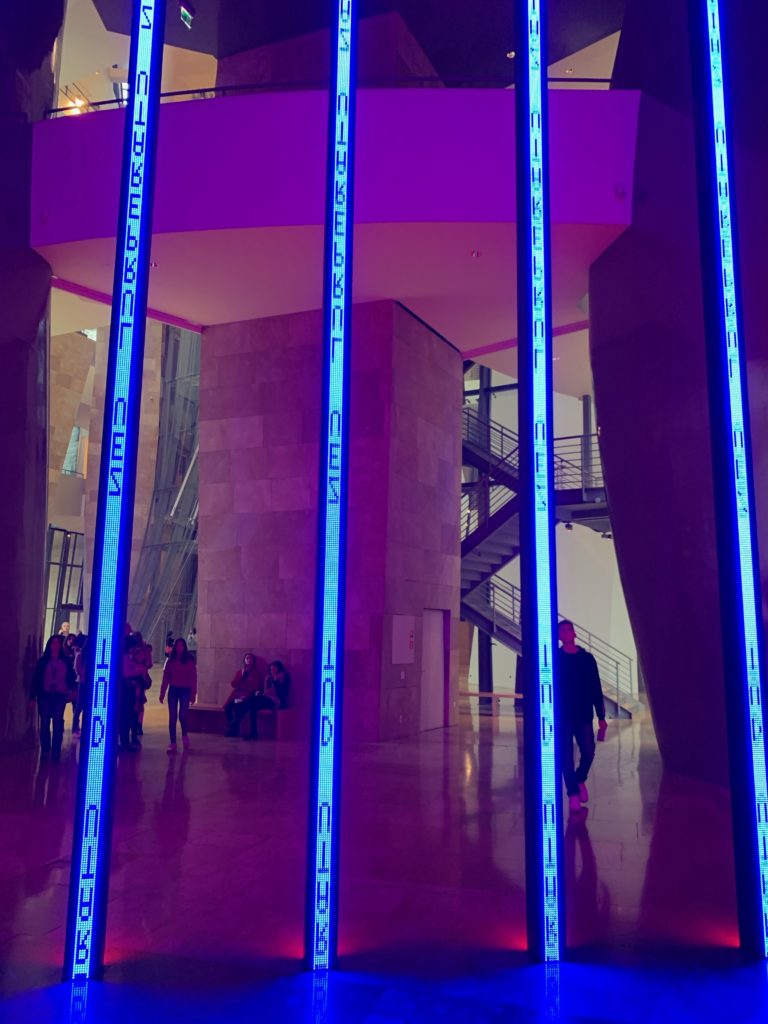
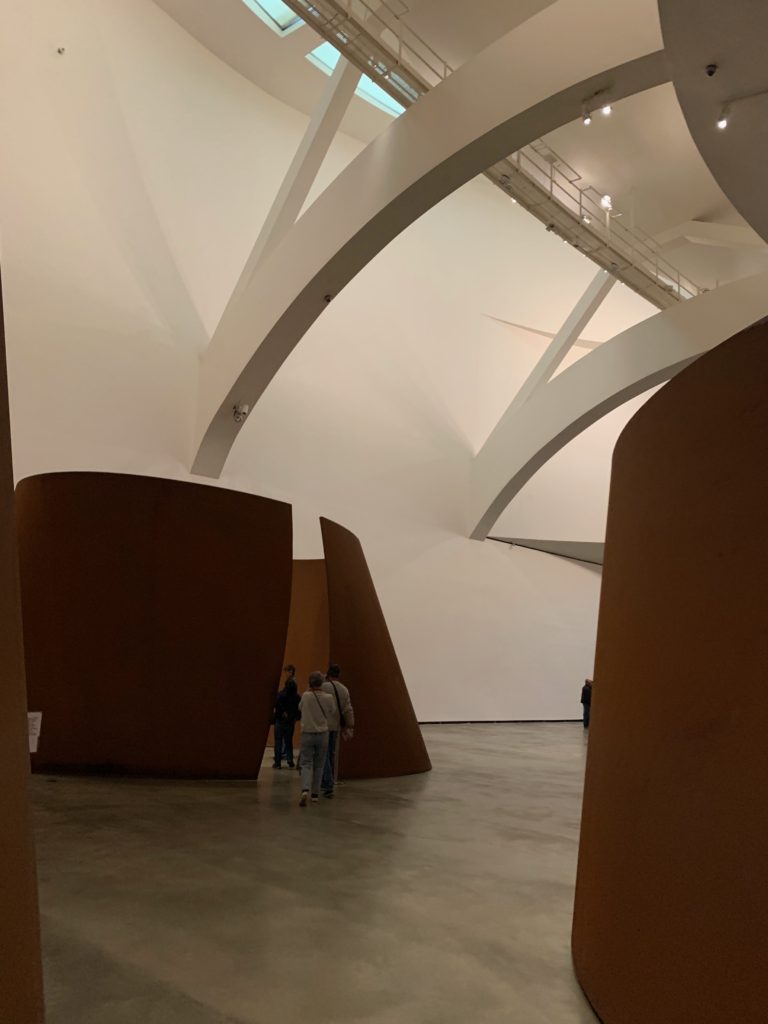
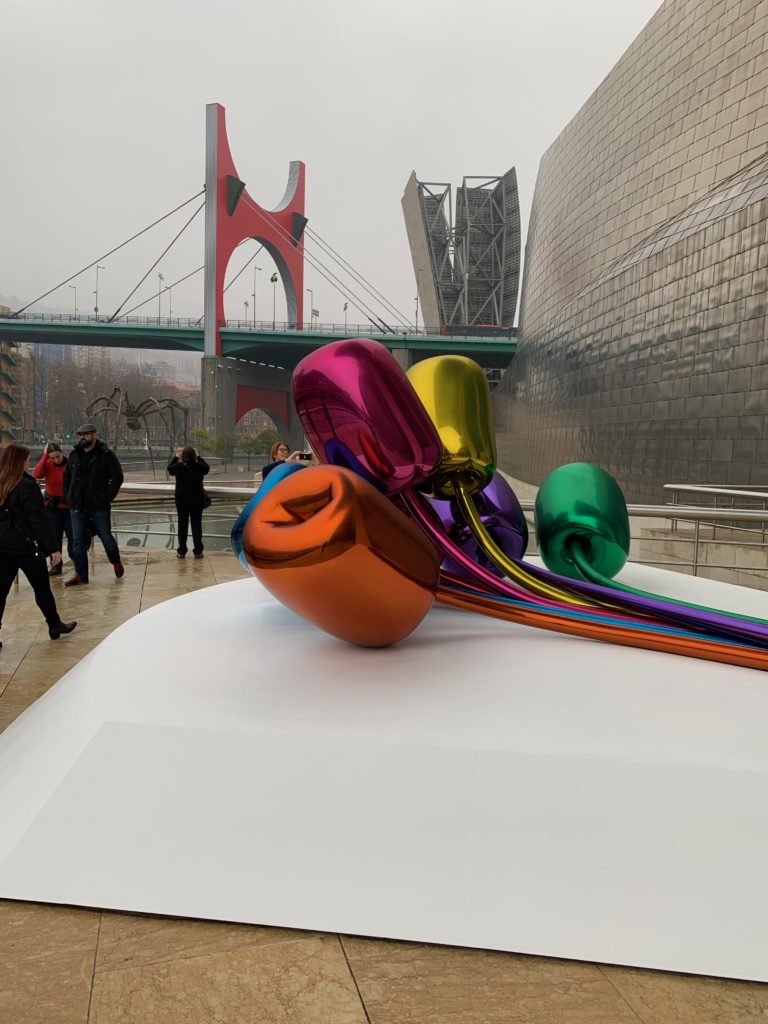
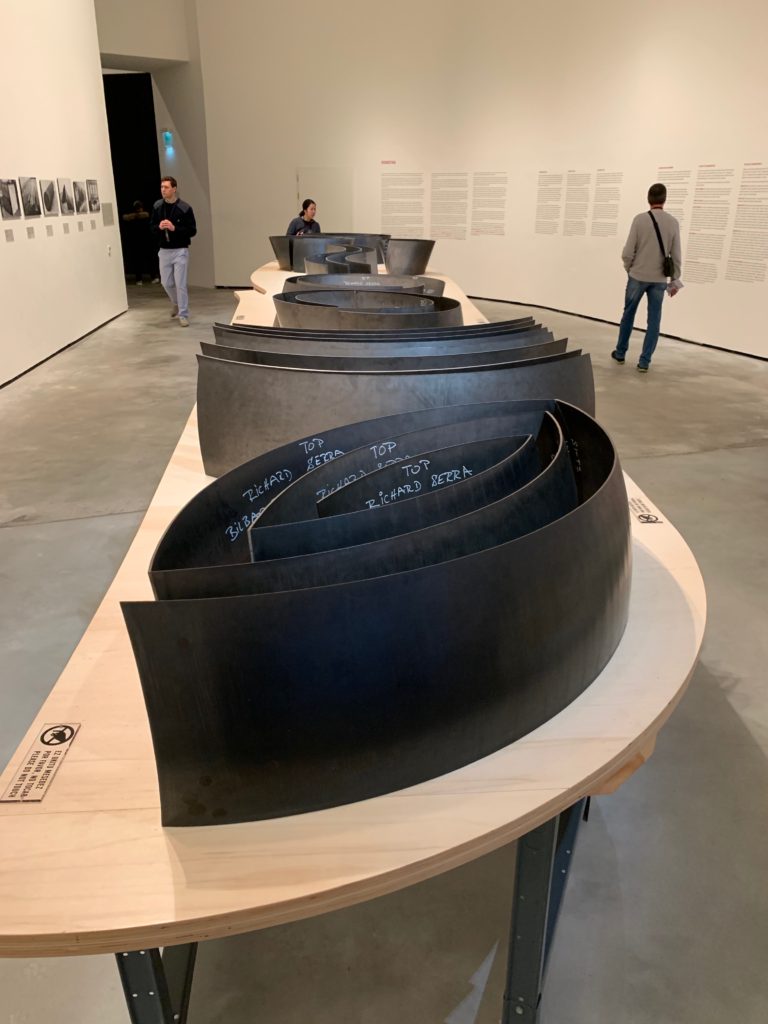
Much like the Tate Modern and Louis Vuitton Foundation, the art on display is contemporary and features a range of exhibits from LED strips to metal tulips. My favorite exhibit, however, is The Matter of Time. This fun and interactive exhibit, which takes up the museum’s largest gallery, allows visitors to wander through the artist’s large steel sculptures. Tourists progress from a simple ellipse to a complex spiral.
I went upstairs to explore the rest of the museum. Other galleries include traditional paintings as well as smaller sculptures. Although Gehry is known for his organic spaces, many of the art galleries are surprisingly normal in shape, with right angles and simple white walls.
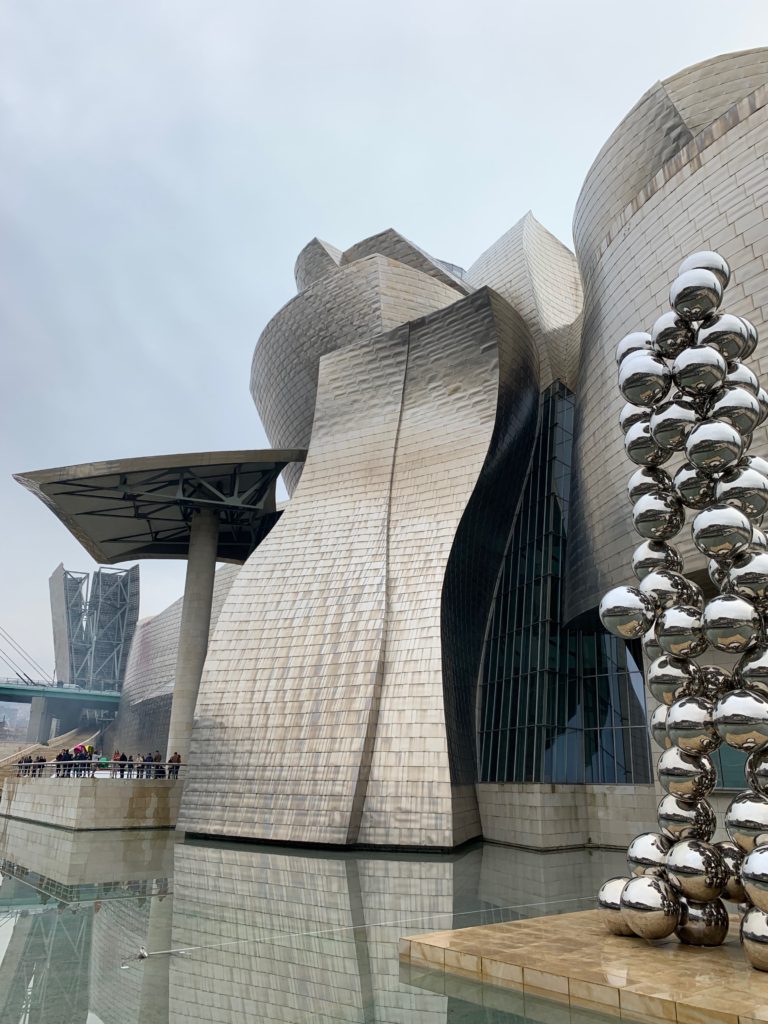
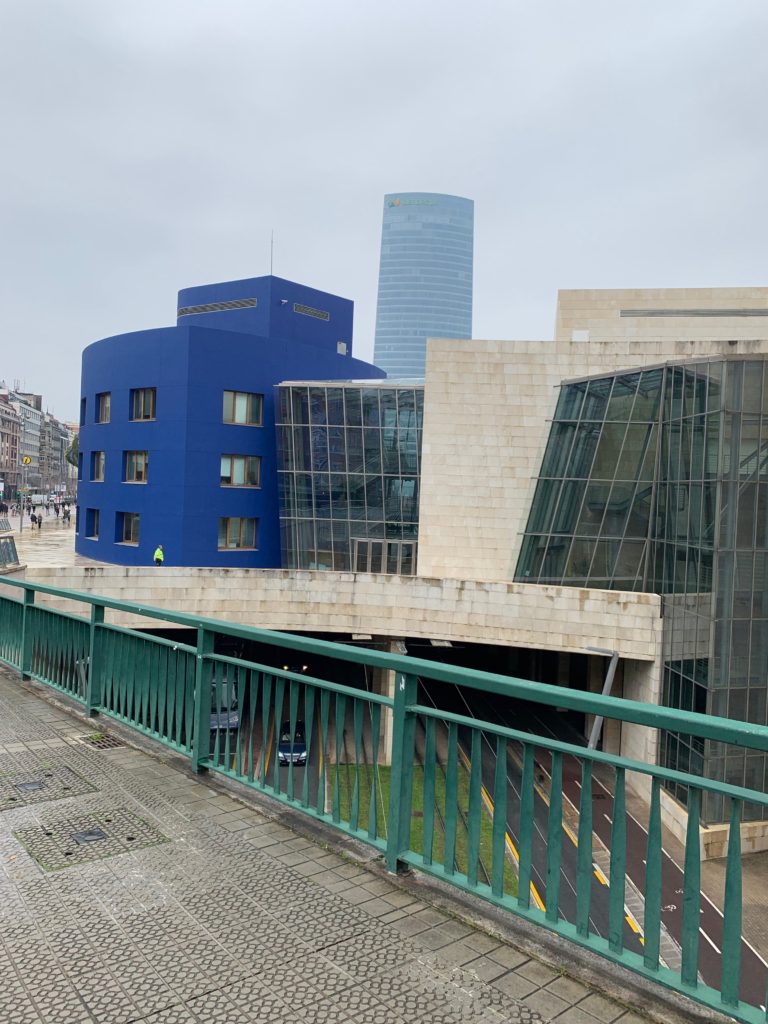
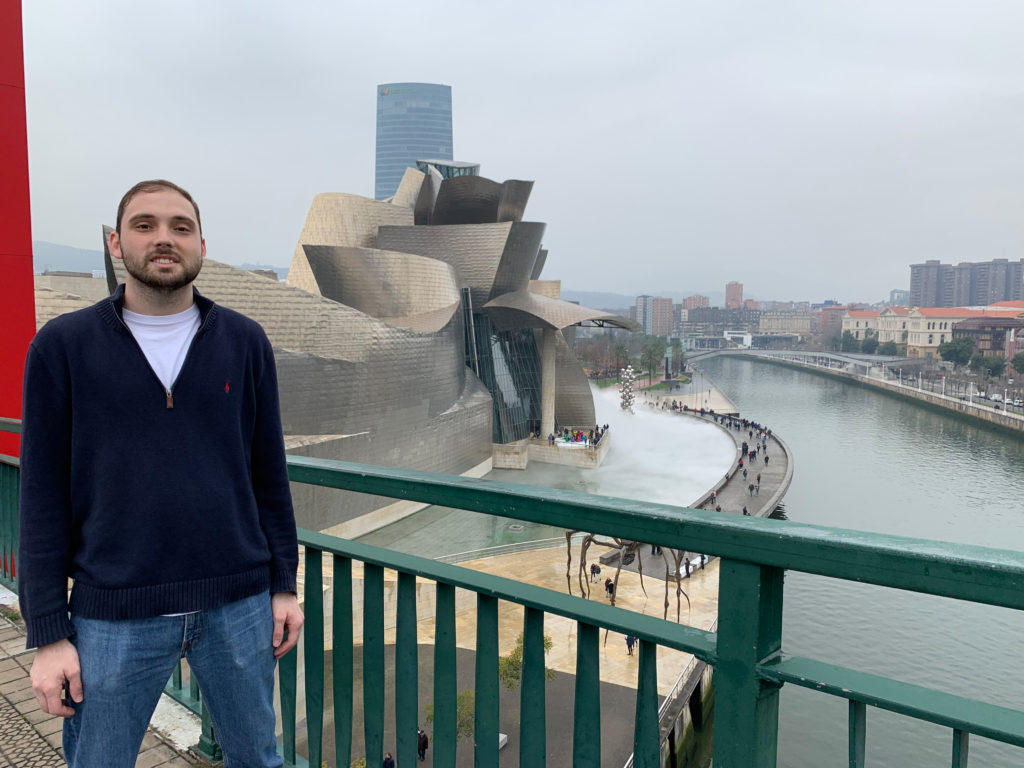
After a thorough exploration of the museum, I went back outside to admire the building’s exterior for one last time. I could not believe that I had finally visited this amazing piece of architecture in person. Although it took 10 years to finally get here, I could not have been more impressed by Frank Gehry’s creativity and attention to detail. Bilbao was more than worth the extra stop on my trip.
Casco Viejo
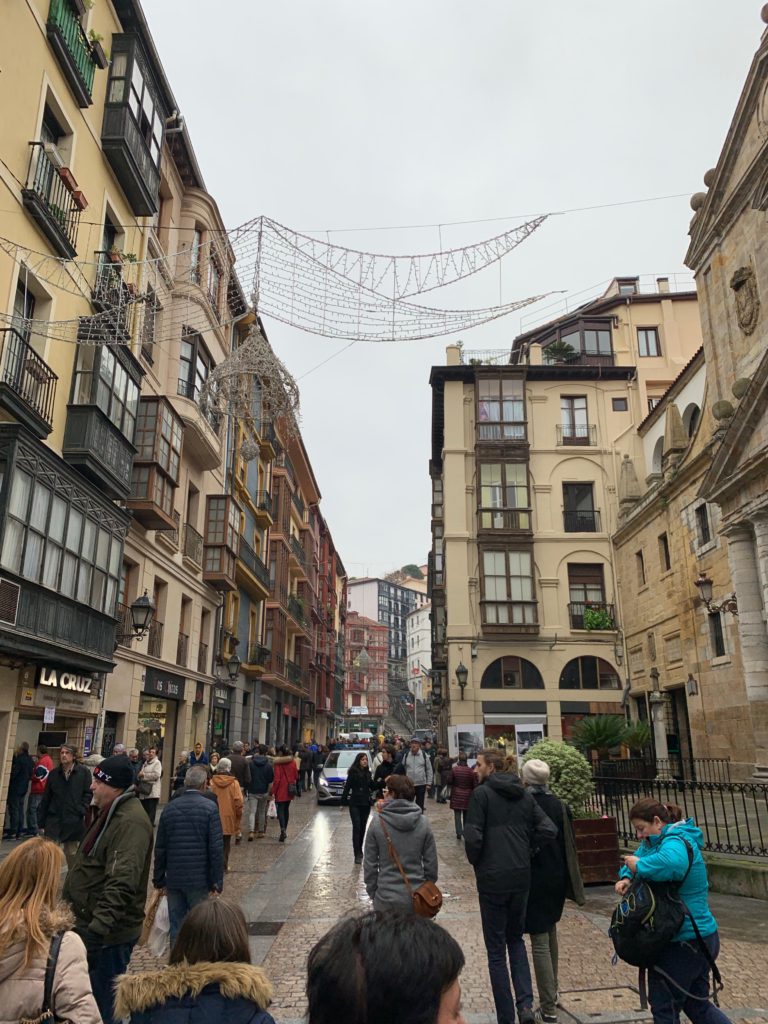
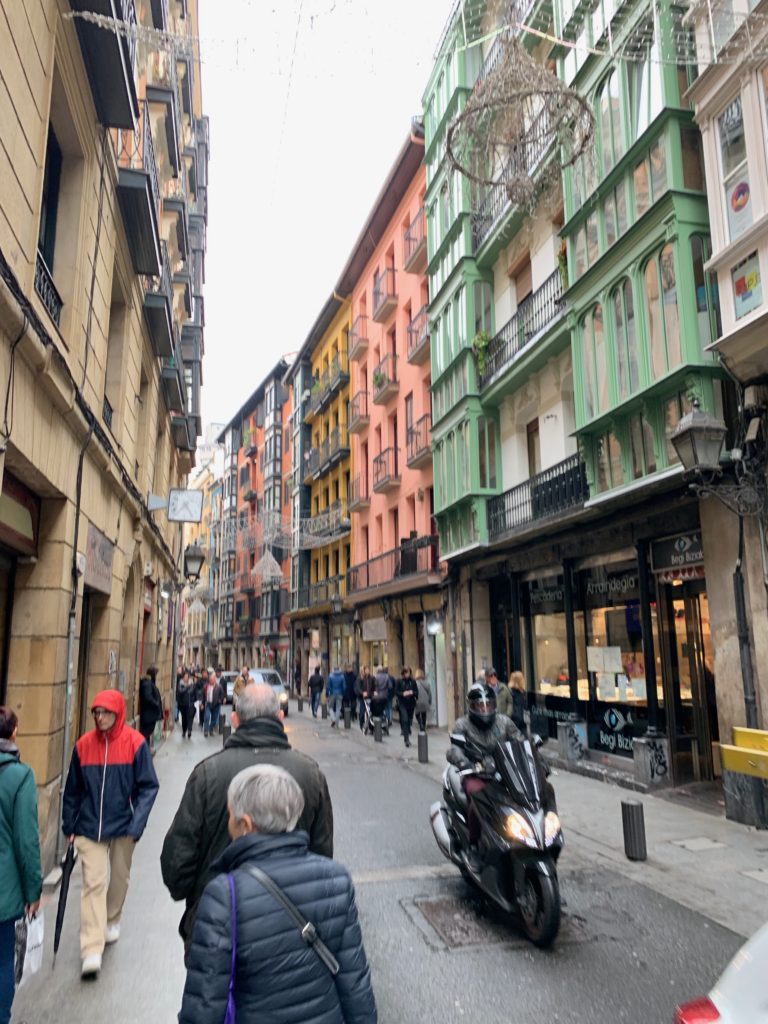
Although the Guggenheim Museum might be the city’s main attraction, Bilbao still has plenty of other beautiful neighborhoods to explore. I hopped on the tram and headed back to Casco Viejo to explore the city’s charming old town. This is by far the most colorful part of Bilbao, which has an architectural style that is unique from other cities I have visited in Europe. The style is reminiscent of traditional Basque towns. The buildings use a mix of stone and wood, with rich colors and prominent windows and balconies.
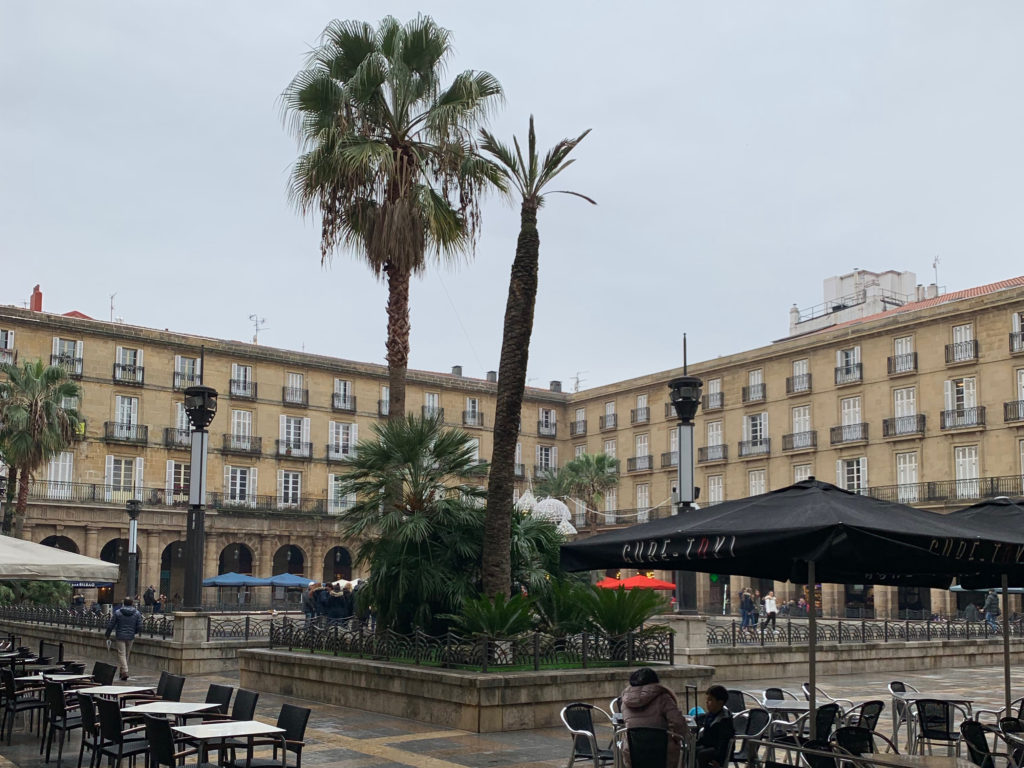
As I wandered through the narrow streets, which are pedestrian-only during the day, I admired the medieval beauty of the area. I eventually arrived at the Plaza Nueva: a grand Neoclassical square. I dipped into one of the arcaded buildings and found one of the best tapas bars I have ever eaten at. Spain is known for its tapas, and some of the best are found in the Basque region. They are also very affordable.
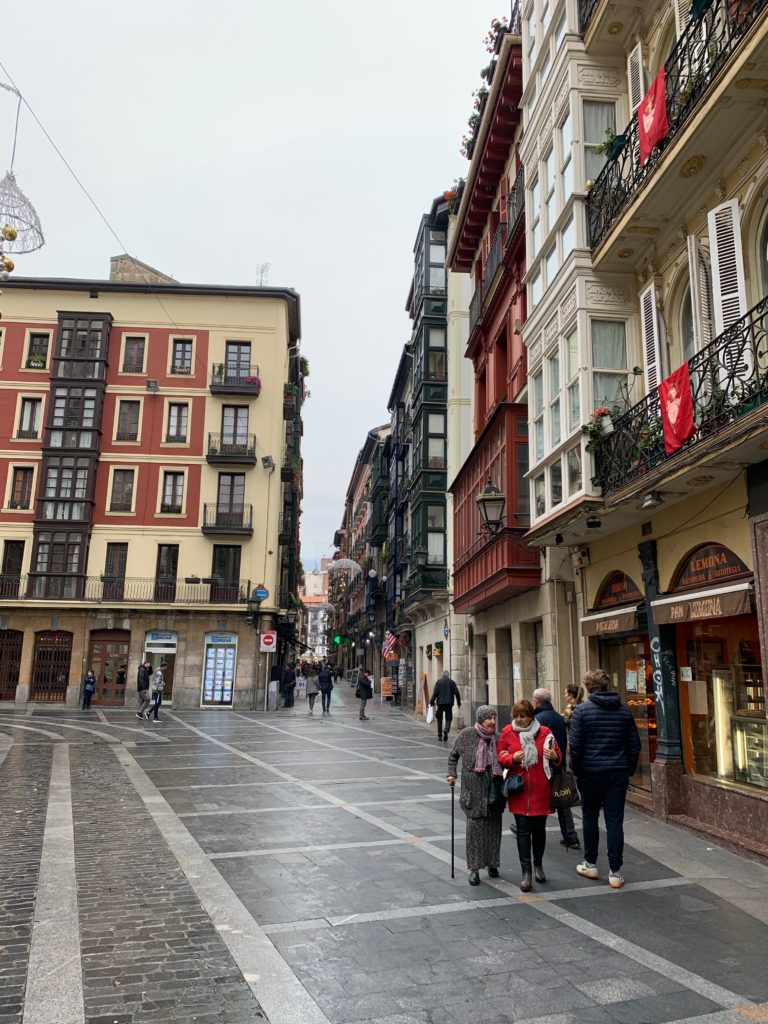
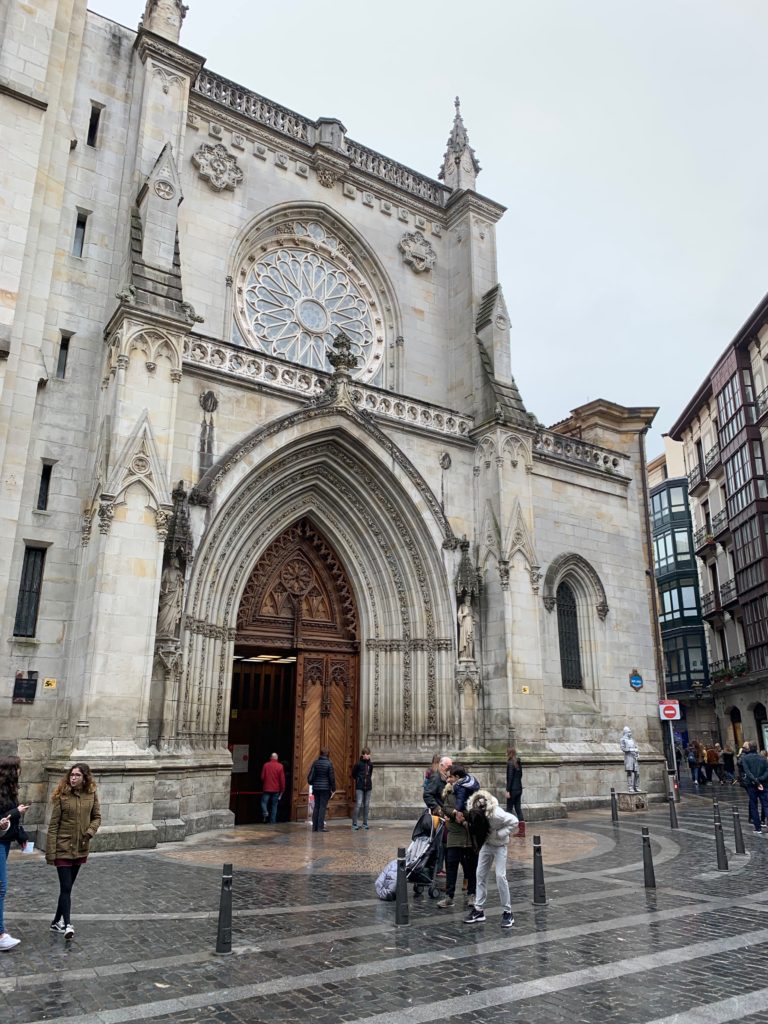
After a quick lunch and a beer, I dipped back outside into the old city. I walked past some more colorful houses and even got a glimpse at the Bilbao Cathedral: a Gothic revival building. I had one more site that I wanted to visit before heading back to the airport for my flight to Lisbon.
Artxanda Funicular
Bilbao has a funicular that takes visitors to the top of Mount Artxanda for a spectacular view of the city. I hopped back on the tram towards the Zubizuri Bridge, which led me in the direction of the base of the funicular. This railway has been operational since 1915 and certainly has a vintage feel to it. I paid €3.60 for a round trip ticket. After everyone had boarded, the funicular began its ascent, dipping under mountainside neighborhoods as I rode to the top.
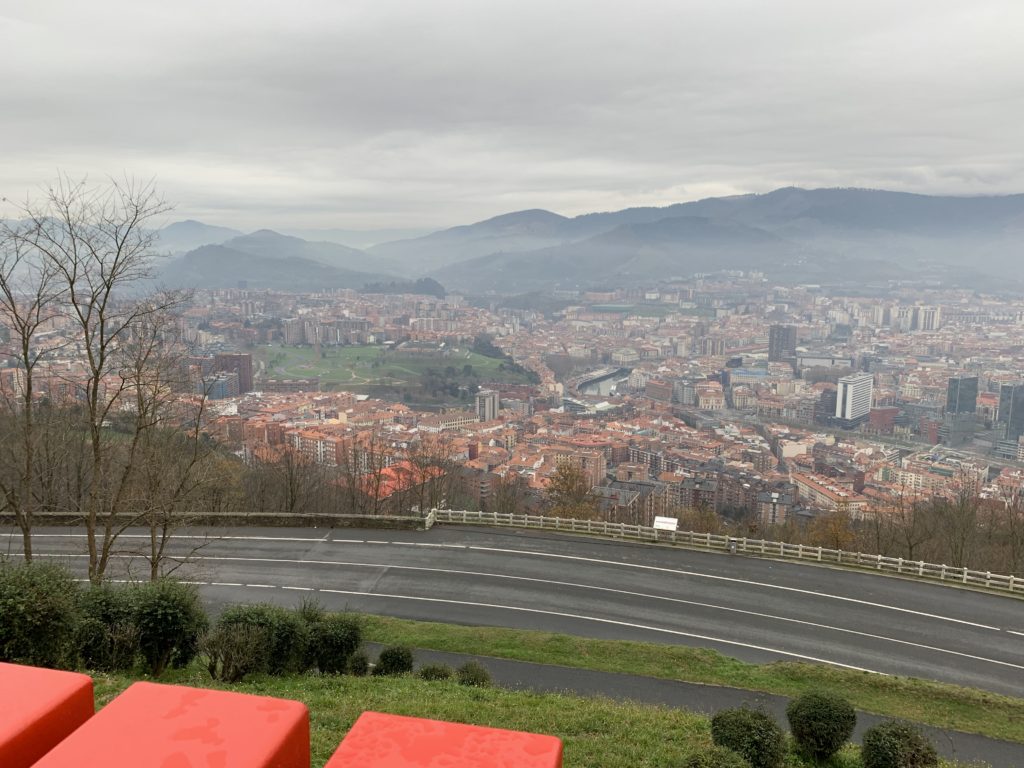
Once I arrived, it was a quick walk over to the park, where I was rewarded with a breathtaking view of Bilbao and the surrounding Basque countryside. Even though it is often overlooked, Bilbao is in a beautiful mountain setting, and this picturesque view made my trip here even more worthwhile. This view is as amazing as those in Barcelona and Florence, with fewer crowds.
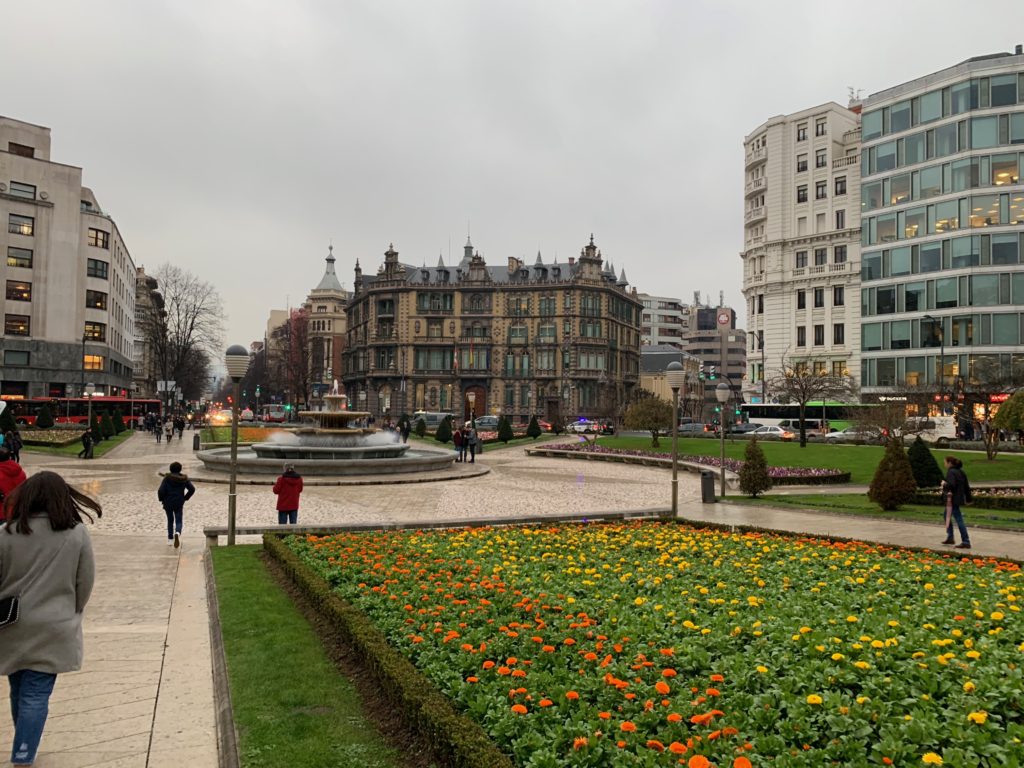
By now, it was getting late in the afternoon, and it was time for me to head to the airport. I went back to my hostel to pick up my bag before heading into the Abando district to wait for the bus. This area is characterized by wider streets, grand buildings, and a large central plaza.
Bilbao Airport
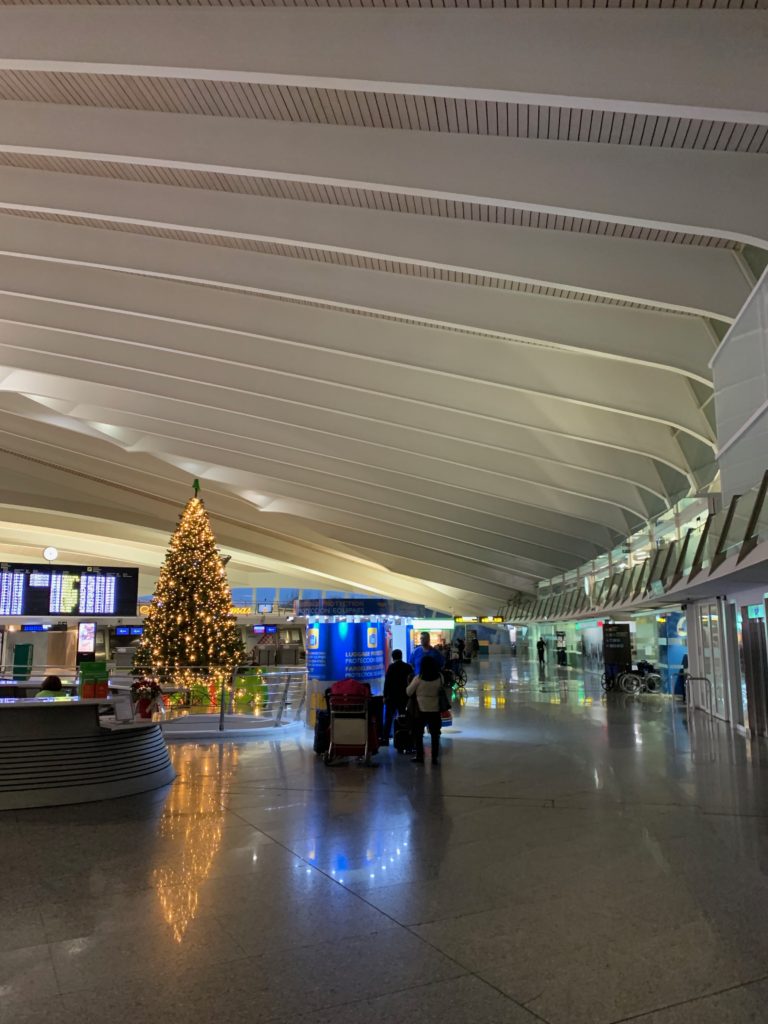
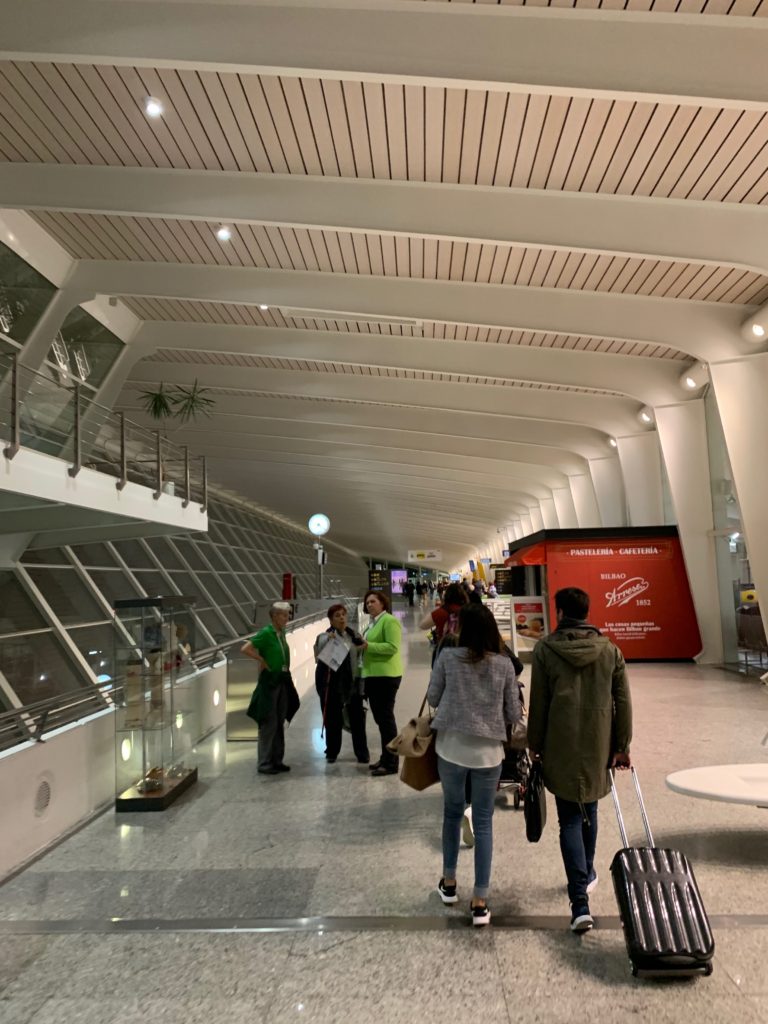
I hopped on the bus back to the airport, which is another architectural gem of its own. Designed by Santiago Calatrava and finished in 2000, the airport terminal was inspired by a bird’s wings, and is often nicknamed “The Dove.” The terminal is designed with white concrete and glass. The ribbed concrete supports are arranged in a linear fashion, giving the concourse a sleek and modern appearance.
Overall, I was more than impressed with Bilbao. It may not be on everyone’s radar when visiting Spain, but I enjoyed it as much as Barcelona and Madrid. The Guggenheim Museum lives up to its reputation as one of the most beautiful contemporary buildings in the world, and it felt like a reward to finally visit it in person. However, beyond the museum, I found a colorful city in a picturesque setting with great food and Basque culture.
